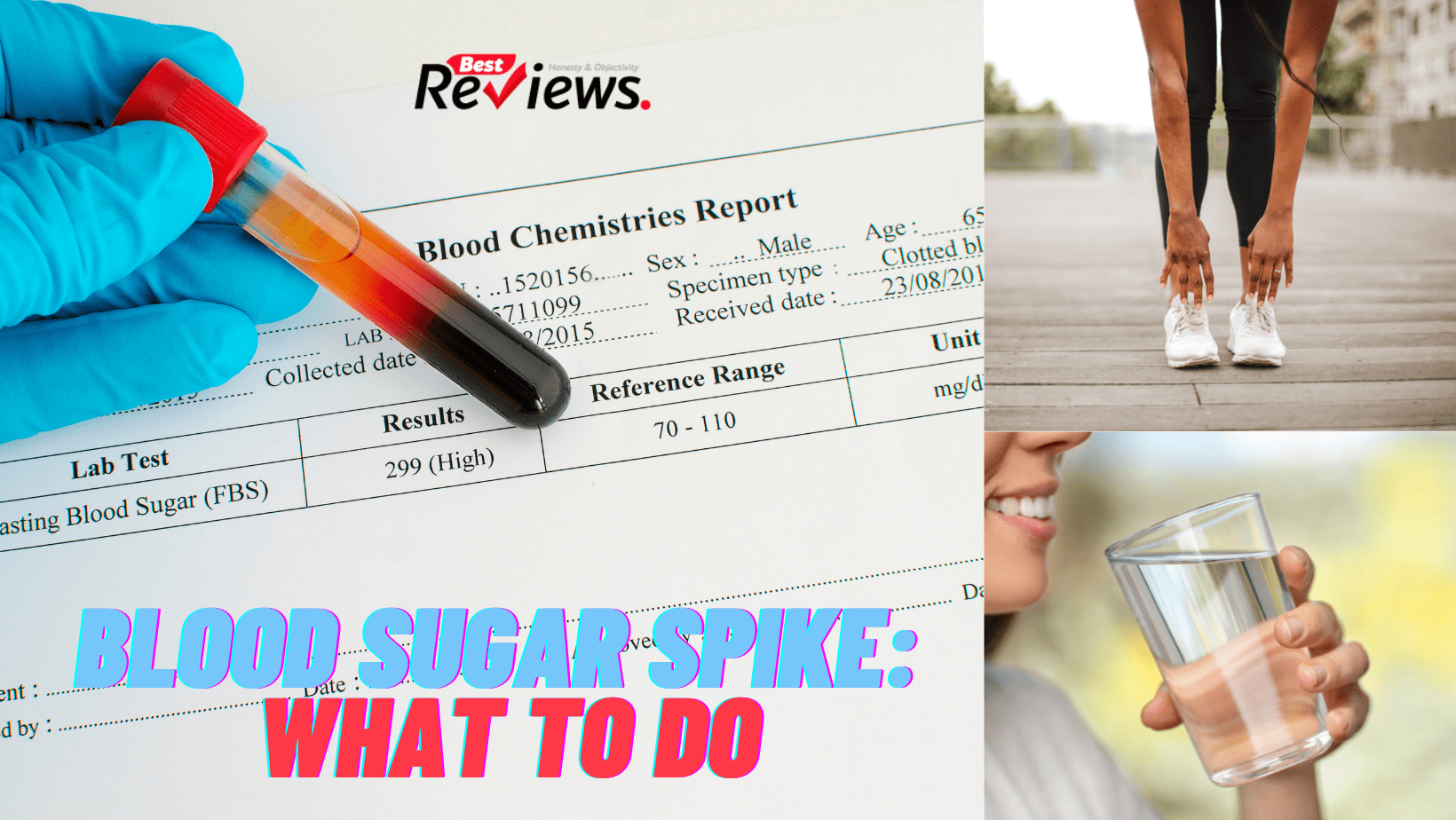Table of Contents
In this article, we will know how blood sugar increases?
Glucose, a simple sugar, builds up in the system and causes blood sugar rises. Since the body cannot utilize glucose correctly in persons with diabetes, this occurs.
The majority of what you consume gets converted to glucose in your bloodstream. Glucose is essential to your health since it powers your muscles, organs, and brain. In order to utilize glucose for energy, it must first reach your cells.
Glucose enters cells when insulin, a hormone produced by the pancreas, unlocks them. Glucose builds up in your bloodstream without insulin, causing it to become more and more concentrated over time.
Blood glucose (blood sugar) levels increase when glucose builds up in the bloodstream. Damage to organs, nerves, and blood arteries is long-term.
People with diabetes experience blood sugar rises as a result of their impaired ability to use insulin.
Ketoacidosis, a life-threatening illness in diabetics, may develop if high blood sugar is left untreated.
Heart disease, blindness, neuropathy, and renal failure may result from long-term high blood sugar levels.
1 Blood sugar spike symptoms

Finding out how to identify the signs of hyperglycemia, often known as high blood sugar, will assist you in maintaining control of your diabetes. Some individuals with diabetes quickly feel the signs of high blood sugar, while others go undetected for years because their symptoms are moderate or imprecise. Some people with diabetes experience the symptoms of high blood sugar immediately.
When your blood glucose level rises to more than 250 milligrams per deciliter (mg/dL), you may start to experience the symptoms of hyperglycemia. The longer you go without treatment, the more severe your symptoms will get.
The following are some symptoms of a sudden rise in blood sugar:
- frequent urination
- fatigue
- increased need to drink
- the vision that is not clear
- headache
2 Blood sugar spike: What to do

It is essential to have a working knowledge of the signs of hyperglycemia. If you think that you could have high blood sugar, you should check it by taking a blood sample from your finger.
After eating, doing some exercise and drinking some water will help reduce your blood sugar. This is especially helpful if you have eaten a lot of starchy carbohydrates.
You could also take an insulin injection, but if you do so, be very cautious to use it in no other context than strictly according to the dosage instructions given to you by your healthcare provider. Insulin may lead to hypoglycemia if it is administered incorrectly (low blood sugar).
3 Ketoacidosis and ketosis

It is also essential to have a solid understanding of the distinction between ketosis and ketoacidosis.
If high blood sugar levels are not managed for an extended period of time, glucose will accumulate in your system, and your cells will be deprived of the fuel they need to function properly. Your body will start using the fat you have stored as fuel. Ketones are a result of the metabolic process that occurs when your cells utilize fat as an alternative to glucose.
- People with diabetes may develop diabetic ketoacidosis, often known as DKA, which is a disease that causes the blood to become overly acidic and has the potential to be fatal. People who have diabetes have insulin that does not operate properly, which means that their ketone levels are not maintained under control, and they may rapidly increase to potentially harmful levels. Diabetic ketoacidosis may lead to diabetic coma or even death.
- People without diabetes may put up with a certain amount of ketones in their blood, a condition known as ketosis. Because their systems are still able to make appropriate use of glucose and insulin, they do not progress to a state known as ketoacidosis. Ketone levels in the body may be more reliably maintained when insulin is working as it should.
Ketoacidosis is an emergency that requires immediate treatment. If you encounter any of the following signs and symptoms, you should immediately dial 911 or seek emergency medical assistance at the nearest hospital:
- a fruity aroma coming from one’s breath or perspiration
- feeling queasy and throwing up
- extreme dryness of the mouth
- a difficult time breathing
- weakness
- the ache in the region of the abdomen
- confusion
- coma
4 Blood sugar spikes causes

Throughout the course of the day, sugar levels in the blood will shift. Your blood sugar will start to increase as soon as you take a bite of food, especially those items that are heavy in carbs like bread, potatoes, or pasta. This will continue for as long as the food is digested.
If your blood sugar is frequently high, you should discuss ways to better control your diabetes with your primary care provider as soon as possible. An increase in blood sugar occurs when:
You are not administering sufficient amounts of insulin.
The effects of your insulin won’t stay as long as you believe they would.
- You are not taking the oral diabetic medicine that you have been prescribed.
- Your current dose of medicine requires some alterations.
- You are taking insulin that has gone bad.
- You are not sticking to your diet and exercise regimen.
- you are suffering from any kind of disease or infection.
- You are utilizing several drugs, such as steroids, for example.
- You’re dealing with some kind of bodily strain, like an injury or an operation.
- You’re experiencing a lot of mental strain as a result of things going wrong at work or at home or with your finances.
If you have a history of good management of your blood sugar but have recently seen rises in your blood sugar levels for no apparent reason, there may be a more immediate explanation.
You may want to try keeping track of everything you eat and drink in a journal. Follow your doctor’s instructions on how often you should check your blood sugar levels.
It is normal practice to take a reading of your blood sugar first thing in the morning before you have eaten anything, and then take another reading two hours after eating. Even if you just record your symptoms for a few days, this information might help you and your doctor figure out what is causing your blood sugar levels to jump.
Some of the most common offenders are:

- Carbohydrates. The majority of people have issues with carbohydrates. Very fast, glucose is produced from the breakdown of carbohydrates. If you use insulin, you should discuss your insulin-to-carb ratio with your attending physician.
- Fruits. Although fresh fruits are beneficial to one’s health, they can contain fructose, a form of sugar that may cause an increase in one’s blood sugar levels. On the other hand, fresh fruits, as opposed to juice, jellies, or jams, are the superior option.
- Fatty foods. The so-called “pizza effect” is something that may be brought on by eating meals high in fat. If we use pizza as an example, the carbs in the crust and sauce will quickly elevate your blood sugar, whereas the effects of the fat and protein on your sugars won’t be seen for many hours after eating the pizza.
- Juice, soda, electrolyte drinks, and sugary coffee drinks. Because of this, you should always count the carbohydrates that are included in the beverages you consume.
- Alcohol. Instantaneously, alcohol causes a rise in one’s blood sugar, particularly when combined with fruit juice or soda. On the other hand, it may result in low blood sugar levels many hours later.
- Lack of regular physical activity. Regular exercise improves insulin’s action by helping the hormone operate more efficiently. Have a conversation with your primary care provider about modifying your prescription so that it works better with your exercise routine.
- Over-treating low blood sugars. It is quite typical to provide excessive treatment. Talk to your healthcare provider about what you should do if there is a dip in your blood glucose level so that you can prevent large fluctuations in your blood glucose level.
5 7 ways to prevent blood sugar spikes

- Develop a food plan along with a nutritionist by working together. You may reduce the likelihood of erratic rises in your blood sugar by planning your meals. Additionally, the American Diabetes Association provides The Ultimate Diabetes Meal Planner, which is another resource that might be useful to you (ADA).
- Commence a program that will help you lose weight. Your body’s insulin use will improve if you reduce the amount of weight you carry. You could try the Weight Watchers program that is available online.
- Acquire the skill of counting carbohydrates. Keeping track of how many carbs you consume might be made easier by using a counting system. Keeping the quantity of food consumed at each meal within a predetermined limit helps maintain stable blood sugar levels. Check out this toolbox for counting carbohydrates as well as the ADA’s The Complete Guide to Counting Carbohydrates.
- Gain an understanding of the glycemic index. According to the findings of the research, not all carbohydrates are created equal. The glycemic index (GI) evaluates the potential impact that various carbohydrates have on one’s blood sugar levels. Those that have a higher glycemic index (GI) rating are likely to have a greater impact on blood sugar levels than foods with a lower value. Through the use of the website glycemicindex.com, you are able to search for low GI foods.
- Find recipes that are good for you. You may purchase a diabetic cookbook from the American Diabetes Association (ADA) at shopdiabetes.com, or you can check out this collection of recipes from the Mayo Clinic.
- You might try using a meal planning tool online. One such example is the Healthy Plate provided by the Joslin Diabetes Center.
- Practice portion control. A food scale in the kitchen can assist you in more accurately measuring your quantities.


















